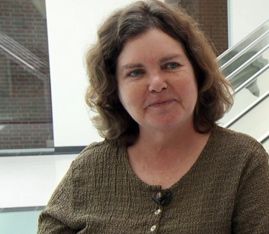From Chicago: A snapshot of online news experiments

I interviewed operators of three Chicago online news sites — Gapers Block, Windy Citizen, and Chicago Talks — recently and found the mix of content and revenue ideas worth following. I’m adding several Chicago sites to my list of promising online news sites.
Led by Andrew Huff, this site is aggregates and offers original content, mostly from about 80 volunteers (professional journalists, other professionals, students and others), edited by eight professionals who receive small stipends. It is expanding its original offerings with a grant from the Chicago Community Trust.
Gapers Block, Huff says, is a Chicago expression for “rubbernecking” or stopping to take a look.
“We’re pulling out the news you may not have seen. We cover in brief ways the big stories of the day. What we really like to do is cover the stories that got buried and you have missed and bring them to the forefront. We’re trying to send people other media,” Huff said, who founded the site in 2003 after an unhappy stint in public relations.
The volunteer writers stick around for about a year, Huff said. The site relies on advertising revenue and Huff draws a small salary.
“We’re are a pretty collaborative effort. It’s a pretty flat structure. I’m writing constantly for the site so it’s not some guy up on high. Because we have such a good reputation in the media and in organizations we cover, (writing for the site) attractive. It’s a little bit of cachet to say you write for Gapers Block.”
This site, founded in 2007 by Brad Flora, aggregates links to the interesting stories of the day. Flora and two interns prime the site. It has an engaged community of users who vote stories and comments up and down. User votes play a significant role in determining what stories rise to the front page of the site.
Advertising is the main source of revenue and Flora says the site makes $5-10,000 a month. In August, he hired two part-time advertising sales people. He thinks he needs to double or triple his user base to be a sustainable business and is using grant funding to improve his content management system to support more users.
Flora believes his two core user groups are attractive to advertisers — Young people in their 20’s or early 30’s who like the off beat news and 50-60 somethings who want a place to discuss politics.
In general, Flora says the discomfort journalists experience when trying to make money holds many sites back.
“The sites are too small. They are run by people who are afraid to ask for money. The journalism curse. My plan was to get big enough that I could attract someone mean enough to sell advertising. Journalists are not comfortable doing that. They can make a fine product, but they’re under pricing advertising, they’re not very good a presenting it, at working the phones. These are all things I struggle with personally.”
Flora also says he’s encouraged by the second wave of large non-profit news organizations such as Texas Tribune who are coming on line with the know-how to raise money.
This site draws most of its content from Columbia College students. The school provides support including editing by faculty and grad students.
Site content focuses on original news that others aren’t covering and aims to produce at least five original stories a week. Suzanne McBride, associate chair of Columbia’s School of Media Arts, said content is fairly traditional and consists of news, not opinion.
McBride said the site turned primarily to students after finding citizen contributors were difficult to rely upon on a consistent basis.
With expansion grant funding, the site will pay teenagers and provide them with transit cards to report on the Austin neighborhood, one of Chicago’s most challenged.
McBride and Columbia College’s Nancy Day said the site ultimately must create an advertising revenue stream, which may prove difficult in neighborhoods such as Austin that have low income residents and relatively few commercial operations to form a pool of potential advertisers.
While I did not interview anyone from the Chicago News Cooperative during my visit, I’d be remiss not to mention this newcomer. Funded by large start up grants from several foundations, the CNC employs professional journalists who focus on politics and policy in the Chicago metro area. It provides content for The New York Times Chicago edition two days a week. Launched in October as a not-for-profit, it fills the role of a traditional alternative to established newspaper organizations. The site promises to “introduce novel ways to connect the community with our news room in a two-way exchange of information.” I asked founder and editor James O’Shea via e-mail to elaborate on that and I’ll report back on what I learn.
(Disclosure: All four of these operations recently received expansion grants from the Chicago Community Trust as part of the Knight Foundation Community Information Challenge. I was on the CCT review panel as a consultant to the Knight Foundation.) Knight is opening another round of the competition and you can apply here.
None of us knows what models for providing news and information will survive. But I think these four sites — three of which have found very inexpensive ways to create content and attract a community of users and one that is attempting a focused professional model — underscore the idea that a diverse mix of media may serve the information needs of communities rather than one large institution.
For more information about the news ecology of Chicago, check out this study commissioned by the Chicago Community Trust, “The New News: Journalism We Want and Need.”
Please join the conversation about online news start ups and new models for news. If you have suggestions for my list, please add them in comments below. You’ll find my list of promising sites here.

Comments